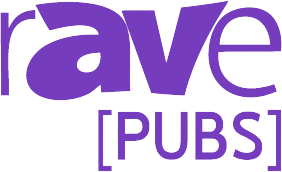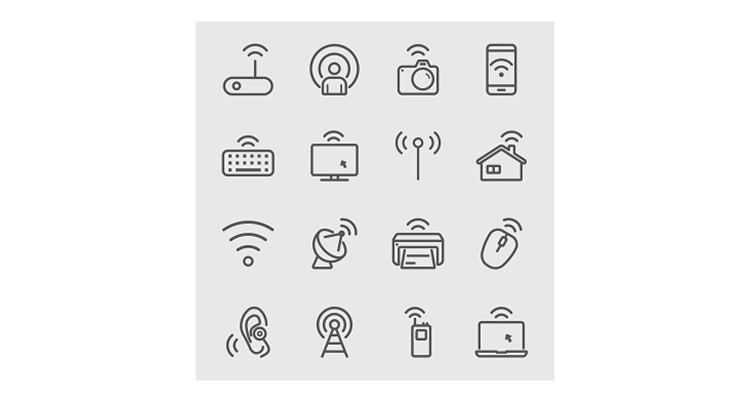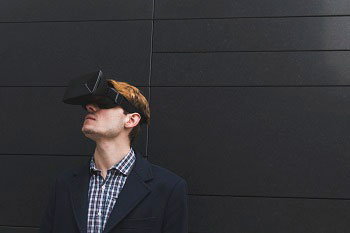InfoComm: Wireless Mics and White Spaces: A Changed (and Changing) Landscape
This column was reprinted with permission from InfoComm International.
 It’s been more than three years since the United States threw the metaphorical switch that transitioned the country from analog to digital broadcasting. In the process, it created a controversy around what are called “white spaces” – the radio-frequency (RF) spectrum that acts as a buffer between TV channels, and forced AV pros out of a popular frequency range. Considering the scale of the switchover from analog to digital, three years probably isn’t enough time to completely resolve a technology challenge of this magnitude, especially as it relates to pro audio and wireless microphones.
It’s been more than three years since the United States threw the metaphorical switch that transitioned the country from analog to digital broadcasting. In the process, it created a controversy around what are called “white spaces” – the radio-frequency (RF) spectrum that acts as a buffer between TV channels, and forced AV pros out of a popular frequency range. Considering the scale of the switchover from analog to digital, three years probably isn’t enough time to completely resolve a technology challenge of this magnitude, especially as it relates to pro audio and wireless microphones.
“You could say that the green flag has been waved but none of the horses have left the gate yet,” is how Chris Lyons, manager of technical and educational communications at Shure, described a situation that remains fluid, though not nearly as chaotic and often acrimonious as it was just a few years ago.
How We Got Here
To review: When the transition to digital broadcasting took place, it freed up large amounts of spectrum, much of it in the 700 MHz to 800 MHz range, which held analog TV channels 52 to 69. The valuable RF real estate was coveted by many large interests, including cellular carriers and members of the White Spaces Coalition, including Microsoft, Google, Dell, HP and Samsung, who saw it as a spawning ground for a wireless consumer device market worth hundreds of billions of dollars.
Broadcasters, audio professionals and live events stagers, on the other hand, who had long used the white spaces frequencies in a highly controlled manner, voiced concern that a massive influx of unlicensed consumer users would wreak havoc on their operations, particularly for events such as sports. Producers of other live events, including theater owners and houses of worship, whose productions increasingly depend on the use of wireless microphones, were in that same camp.
In a series of decisions, the FCC acted mainly in favor of cellular carriers, public safety and the White Spaces Coalition. RF microphone systems using the 700-MHz spectrum were essentially evicted and the spectrum auctioned. That left the pro audio industry with pieces of spectrum beginning at 470 MHz and running up to about 698 MHz, where members of the White Spaces Coalition were eyeing bandwidth for new devices.
However, the FCC also provided some amelioration for events professionals and pro audio: at least two 6-MHz channels reserved specifically for professional wireless mic use in each geographic area (some markets even have more). In other words, in every U.S. market, there is supposed to be at least 12 MHz of available bandwidth in a desirable frequency band reserved for wireless mic use.
Of course, large wireless configurations — generally greater than 16 microphones — will require additional spectrum. To address this, more TV channels can be reserved to protect RF audio against interference from various TV band devices (TVBD, formerly known as white space devices, or WSD) that will be introduced in the consumer marketplace in the next several years. Licensed microphone users, such as broadcasters and their content providers, can reserve more channels directly; unlicensed users, such as live-entertainment productions, can submit a request to the FCC 30 days prior to their performances and, pending approval, reserve additional channels.
Following so far? There’s more.
The FCC also mandated the establishment of a database listing available frequencies nationwide and conditionally approved several private companies to administer the databases, of which two have completed their work and been certified: Spectrum Bridge and Telcordia. Channels reserved through one database administrator should be shared automatically with the other database providers so that mic users only need to register once with the database of their choice.
Finally, in a concession to wireless mics users, the FCC also placed significant restrictions on the use of RF devices in the old TV spectrum. For instance, unlicensed consumer devices fall under strict emission rules that prevent the direct use of IEEE 802.11 (i.e., Wi-Fi) in a single channel, effectively making the new spectrum unusable for Wi-Fi technologies. In addition, smartphones and other wireless devices must also monitor the spectrum locally once every minute to confirm that no legacy wireless microphones, video-assist devices or other emitters are present.
And So?
Harold Blumberg, a frequency coordination specialist and consultant whose corporate event work recently included a convention for a large international real estate company in Orlando, Fla., that required 147 channels of wireless audio, says that despite everything, uncertainty clouds the future a RF operations. For example, he says, the need to apply for additional RF channels for large projects more than 30 days in advance may prove unrealistic.
“If you pick your frequencies 30 days out, you often find that things have changed when you actually get to the site,” he explains. As a result, on-site scans using commercial scanning software will be more necessary than ever as the most effective way to identify portable local radios, for instance, or challenges caused by local topography or the shielding afforded by various building construction.
“Compared to three years ago, it’s been steadily getting worse,” he says, noting the loss of bandwidth and the potential to lose even more in future government auctions. “A lot depends on how well manufacturers are able to fit more signal into less bandwidth with new technologies.”
Manufacturers are, indeed, adapting their technology to the new spectrum landscape, using digital RF filters to fit more channels of wireless into single bands, such as Shure’s new ULXD series, which can squeeze up to 47 channels into a TV channel. Lyons notes the irony of increased demand for RF audio systems at a time when the sector has become more complicated, comparing the allure that producers find in wireless audio to air conditioning: “Once you have it, it’s hard to live without it.”
Geoff Shearing, president of Masque Sound, which in addition to working on numerous corporate and other live events is also one of three major AV systems providers to New York City’s theater district, agrees that the RF landscape is anything but settled in the wake of the white spaces controversy.
“We’re still waiting to see what will happen when [TVBDs] come on the market,” he says. “All we can do in the meantime is play by the rules and register our microphones with the database.”
Shearing says the shift has been complex, coming at a time when the average large theater production uses as many as 60 channels of wireless audio — three times what it required 20 years ago. He says he’s keenly watching the market develop new systems that can compress more channels into less spectrum, but that few of those systems have reached the market yet and none have been tested in high-density RF environments such as Broadway. And not all of the announced systems have products that fit theatrical requirements, such as very small beltpacks.
Masque and other major event systems providers also rely on software programs to help them manage their frequency allocations. One of those is IAS, a software program developed by Professional Wireless, a company Masque acquired several years ago. It lets users virtually drag and drop microphones of various manufacturers into a database that automatically calculates the best frequencies to use. Even with that kind of technology assist, Shearing says Masque and other major Broadway RF vendors, such as Sound Associates and PRG, bump into each other on occasion. “Normally, we’re competitors, but when it comes to Broadway, we have to work closely together and share information to make it work for everyone,” he says.
Few places even come close to what Broadway RF users have to contend with, but manufacturers are looking to make the process easier with seminars, free software, training and, in some cases, new services. For instance, Sennheiser will announce the availability this September of a new service through which the microphone maker will offer to register events that require spectrum beyond what’s normally available in a given market.
“We offer a lot of DIY guidance for this, but we also know how to push the buttons faster, which can make it easier for users,” says Joe Ciaudelli, director of advanced projects and educational services at Sennheiser. Pricing hasn’t been announced for the service, but Ciaudelli says it will be scaled to the event’s needs and “be in the hundreds of dollars, not the thousands.”
RF was always a complex proposition, and the white spaces turbulence made it more so. But technology has a remarkable propensity for being able to fix what politics scrambles. New RF audio systems will address newly constrained spectrum and a new informational infrastructure is already coming together around it. Like everything that digital technology has disrupted, it’s mostly a matter of getting used to it.
[Note: Since this story was first published, it was edited to clarify the two separate white spaces issues that affected pro audio: the FCC’s auctioning of spectrum in the 700 MHz range and its allowance of new wireless devices in the 470 to 698 MHz range.]





